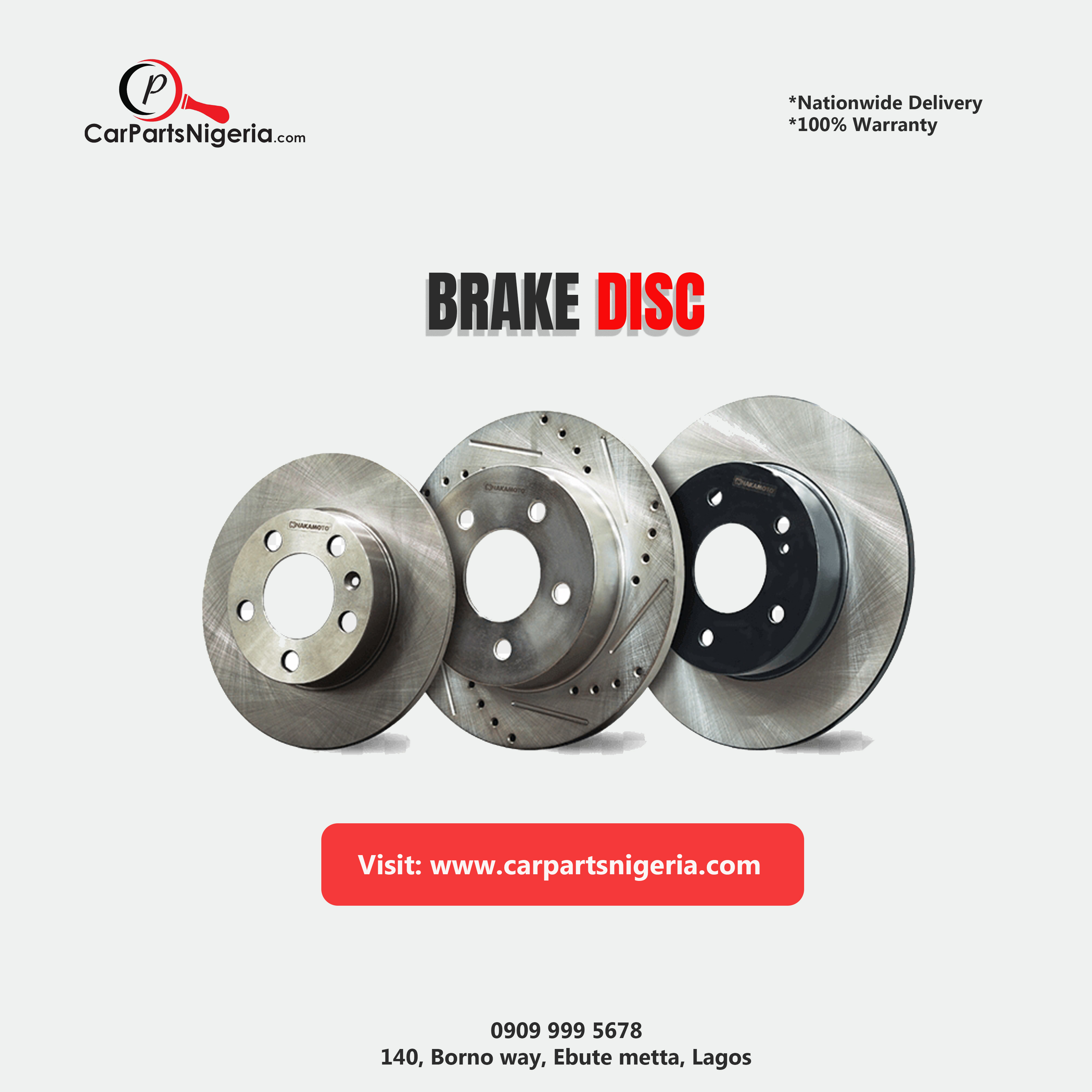Blog

The Brake Disc
The brake disc
A disc brake is a type of brake that uses the calipers to squeeze pairs of pads against a disc or a rotor to create friction. This action slows the rotation of a shaft, such as a vehicle axle, either to reduce its rotational speed or to hold it stationary. The energy of motion is converted into waste heat which must be dispersed.
Hydraulically actuated disc brakes are the most commonly used form of brake for motor vehicles, but the principles of a disc brake are applicable to almost any rotating shaft. The components include the disc, master cylinder, and caliper (which contains a cylinder and two brake pads) on both sides of the disc.
The brake disc is the rotating part of a wheel's disc brake assembly, against which the brake pads are applied. The material is typically gray iron, a form of cast iron. The design of the discs varies somewhat. Some are simply solid, but others are hollowed out with fins or vanes joining the disc's two contact surfaces (usually included as part of a casting process). The weight and power of the vehicle determine the need for ventilated discs.The "ventilated" disc design helps to dissipate the generated heat and is commonly used on the more-heavily loaded front discs.
Discs for motorcycles, bicycles, and many cars often have holes or slots cut through the disc. This is done for better heat dissipation, to aid surface-water dispersal, to reduce noise, to reduce mass, or for marketing cosmetics.
Slotted discs have shallow channels machined into the disc to aid in removing dust and gas. Slotting is the preferred method in most racing environments to remove gas and water and to deglaze brake pads. Some discs are both drilled and slotted. Slotted discs are generally not used on standard vehicles because they quickly wear down brake pads; however, this removal of material is beneficial to race vehicles since it keeps the pads soft and avoids vitrification of their surfaces. On the road, drilled or slotted discs still have a positive effect in wet conditions because the holes or slots prevent a film of water from building up between the disc and the pads.
Two-piece discs are a disc where the center mounting part of the disc is manufactured separately from the outer friction ring. The central section used for fitment is often referred to as the bell or hat and is commonly manufactured from an alloy such as a 7075 alloy and hard anodised for a lasting finish. The outer disc ring usually is manufactured from grey iron but in special applications can be from steel or carbon ceramic. Originating from Motorsport but now common in high-performance applications and aftermarket upgrades. Two-piece discs can be supplied as a fixed assembly with regular nuts, bolts, and washers or a more complicated floating system where drive bobbins allow the two parts of the brake disc to expand and contract at different rates, therefore, reducing the chance a disc will warp from overheating. Key advantages of a two-piece disc are a saving in critical un-sprung weight and the dissipation of heat from the disc surface through the alloy bell (hat). Both fixed and floating options have their drawbacks and advantages, floating discs are prone to rattle and collection of debris and are best suited to Motorsport whereas fixed is best for road use.
Racing(Cars)
In racing and high-performance road cars, other disc materials have been employed. Reinforced carbon discs and pads inspired by aircraft braking systems such as those used on Concorde were introduced in Formula One by Brabham in conjunction with Dunlop in 1976. Carbon–carbon braking is now used in most top-level motorsport worldwide, reducing unsprung weight, giving better frictional performance and improved structural properties at high temperatures, compared to cast iron. Carbon brakes have occasionally been applied to road cars, by the French Venturi sports car manufacturer in the mid-1990s for example, but need to reach a very high operating temperature before becoming truly effective and so are not well suited to road use. The extreme heat generated in these systems is visible during night racing, especially on shorter tracks. It is not uncommon to see the brake discs glowing red during use.
Adjustment mechanism
In automotive applications, the piston seal has a square cross-section, also known as a square-cut seal.
As the piston moves in and out, the seal drags and stretches on the piston, causing the seal to twist. The seal distorts approximately 1/10 of a millimeter. The piston is allowed to move out freely, but the slight amount of drag caused by the seal stops the piston from fully retracting to its previous position when the brakes are released, and so takes up the slack caused by the wear of the brake pads, eliminating the need for return springs.
In some rear disc calipers, the parking brake activates a mechanism inside the caliper that performs some of the same functions.
Disc damage modes
Discs are usually damaged in one of four ways: scarring, cracking, warping, or excessive rusting. Service shops will sometimes respond to any disc problem by changing out the discs entirely, This is done mainly where the cost of a new disc may actually be lower than the cost of labor to resurface the old disc. Mechanically this is unnecessary unless the discs have reached the manufacturer's minimum recommended thickness, which would make it unsafe to use them, or vane rusting is severe (ventilated discs only). Most leading vehicle manufacturers recommend brake disc skimming (US: turning) as a solution for lateral run-out, vibration issues, and brake noises. The machining process is performed in a brake lathe, which removes a very thin layer off the disc surface to clean off minor damage and restore uniform thickness. Machining the disc as necessary will maximize the mileage out of the current discs on the vehicle.
Posted on January 2023,26 // Author: Admin